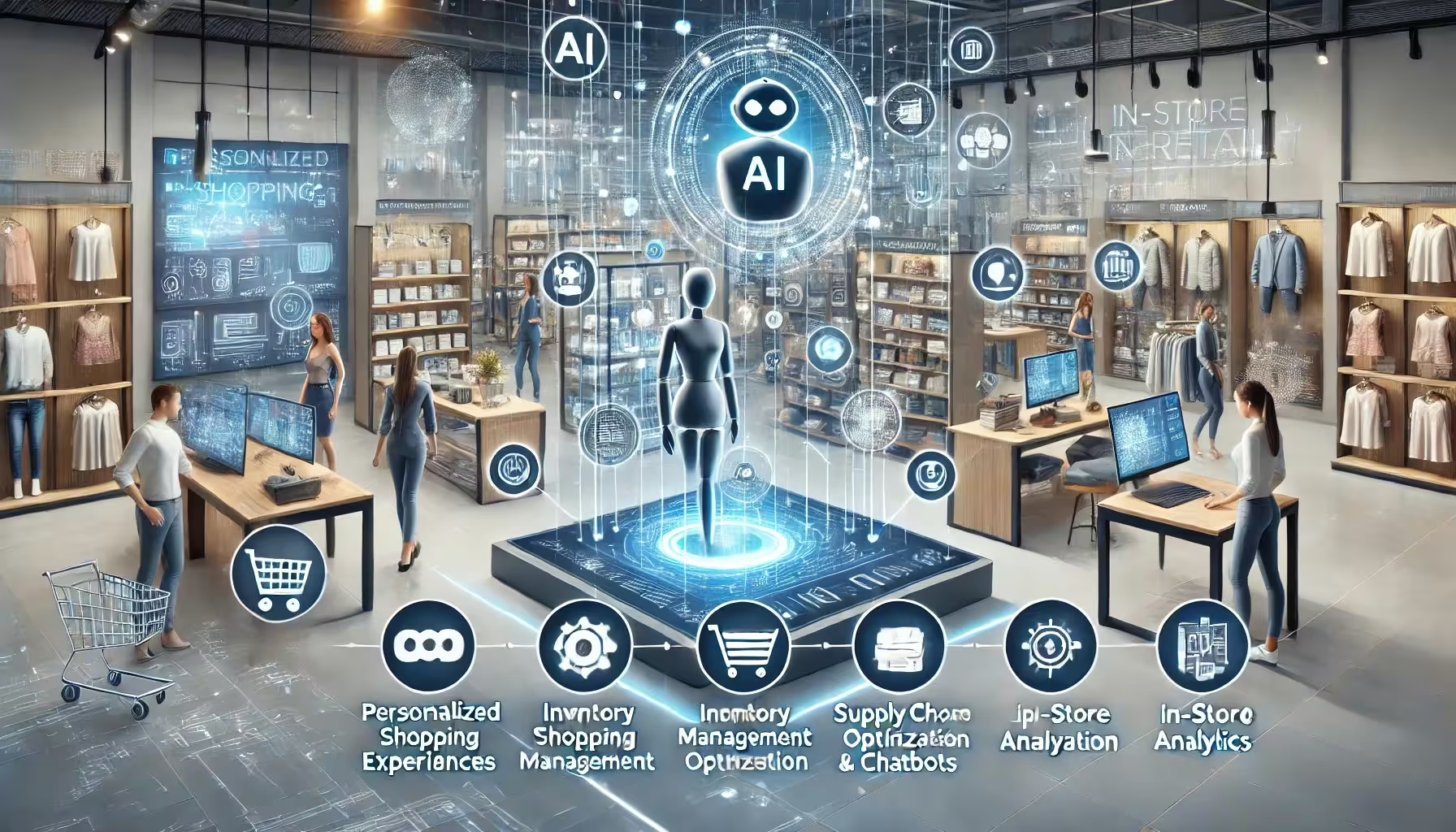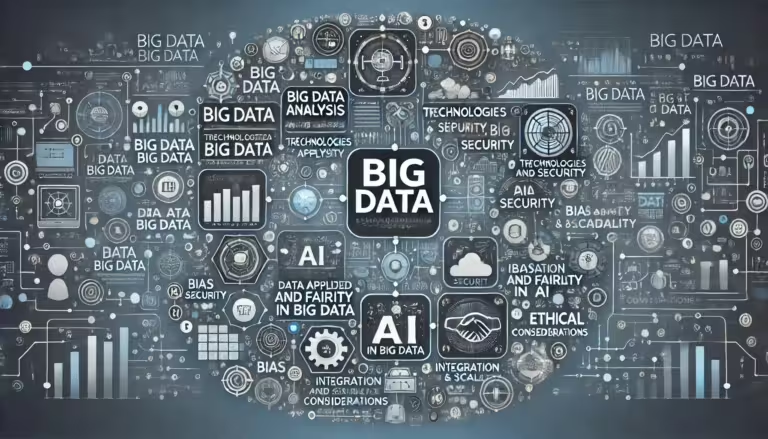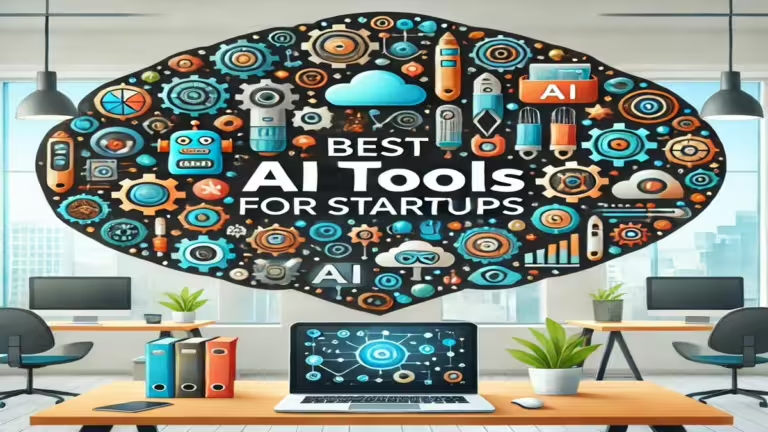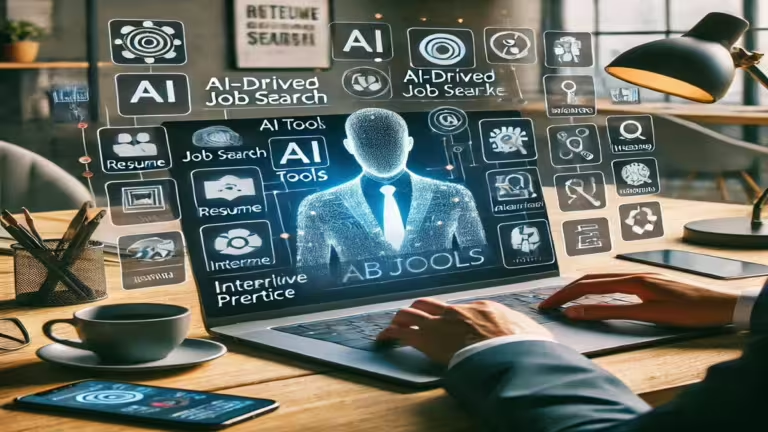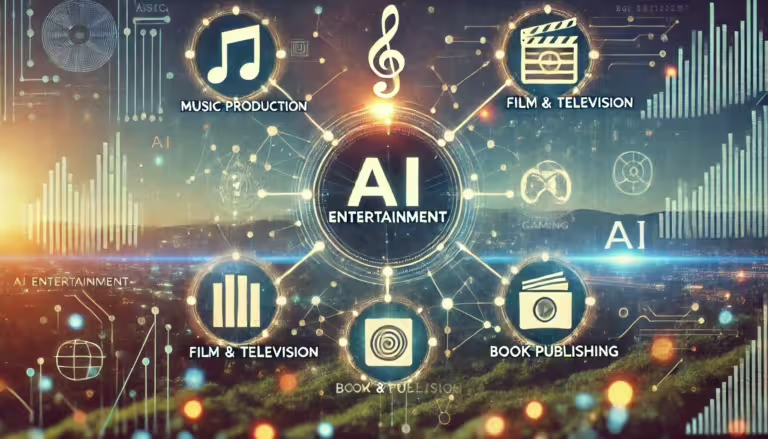The retail landscape is undergoing a profound transformation, with artificial intelligence (AI) emerging as a game-changing force. As consumers increasingly demand personalized, seamless, and efficient shopping experiences, retailers are turning to AI to meet these expectations and stay competitive. From inventory management to customer service, AI in retail is reshaping every aspect of the industry.
In this comprehensive guide, we’ll explore how AI is revolutionizing retail, examining its applications, benefits, challenges, and future potential. We’ll delve into real-world examples of AI implementation in retail and address frequently asked questions to provide a clear understanding of this rapidly evolving technology.
The Rise of AI in Retail
Artificial intelligence in retail refers to the use of advanced algorithms, machine learning, and data analytics to automate processes, gain insights, and enhance the shopping experience. As retail faces challenges such as changing consumer behaviors, supply chain disruptions, and increased competition, AI offers solutions to optimize operations and drive growth.
The global AI in the retail market is projected to reach $24 billion by 2028, highlighting the growing adoption of this technology across the industry. Retailers are leveraging AI to streamline operations, personalize customer interactions, and make data-driven decisions that impact their bottom line.
Key Applications of AI in Retail
1. Personalized Shopping Experiences
AI-powered recommendation engines analyze customer data, including browsing history, purchase patterns, and preferences, to offer tailored product suggestions. This level of personalization enhances the shopping experience and increases the likelihood of purchases.
Example: Amazon’s product recommendation system, which uses AI to suggest items based on a customer’s browsing and purchase history, has been credited with driving up to 35% of the company’s revenue.
2. Inventory Management and Demand Forecasting
AI algorithms can predict future demand by analyzing historical sales data, market trends, and external factors like weather or events. This helps retailers optimize inventory levels, reduce waste, and ensure product availability.
Example: Walmart uses AI to forecast demand and manage inventory across its vast network of stores, resulting in reduced stockouts and improved efficiency.
3. Dynamic Pricing
AI enables retailers to adjust prices in real time based on factors such as demand, competitor pricing, and inventory levels. This optimizes profits while maintaining competitiveness in the market.
Example: Online retailer Jet.com uses AI to optimize pricing dynamically, considering factors like item location and basket size to offer customers the best possible prices.
4. Customer Service and Chatbots
AI-powered chatbots and virtual assistants provide 24/7 customer support, answering queries, handling complaints, and even assisting with purchases. This improves response times and customer satisfaction while reducing operational costs.
Example: Sephora’s chatbot on Facebook Messenger helps customers find products, book in-store appointments, and get beauty advice, enhancing the overall shopping experience.
5. Visual Search and Recognition
AI-driven visual search technology allows customers to find products by uploading images, improving the ease and accuracy of product discovery.
Example: ASOS’s Style Match feature lets shoppers upload photos of clothing items they like, and the AI system finds similar products available on the platform.
6. Fraud Detection and Prevention
AI algorithms can analyze transaction patterns to identify and prevent fraudulent activities, protecting both retailers and customers.
Example: PayPal uses AI to detect and prevent fraudulent transactions, analyzing millions of transactions in real time to identify suspicious patterns.
7. Supply Chain Optimization
AI helps retailers optimize their supply chain by predicting demand, identifying potential disruptions, and suggesting alternative sourcing options.
Example: H&M uses AI to analyze store receipts, returns, and loyalty card data to optimize its supply chain and reduce excess inventory.
8. In-Store Analytics
AI-powered computer vision and sensors can track customer movement and behavior in physical stores, providing insights to optimize store layouts and improve the shopping experience.
Example: Kroger’s “Retail as a Service” platform uses AI and sensors to provide real-time analytics on customer behavior and product performance in stores.
Benefits of AI in Retail
1. Improved Customer Experience: AI enables personalized recommendations, faster customer service, and seamless omnichannel experiences.
2. Increased Operational Efficiency: Automation of routine tasks and data-driven decision-making lead to cost savings and improved productivity.
3. Enhanced Inventory Management: AI-driven demand forecasting reduces stockouts and overstock situations, optimizing inventory levels.
4. Data-driven decision-making: AI analytics provide actionable insights for strategic business decisions.
5. Competitive Advantage: Retailers leveraging AI can offer unique, personalized experiences that set them apart from competitors.
Challenges and Considerations
While AI offers numerous benefits, retailers must navigate several challenges:
1. Data Privacy and Security: Collecting and analyzing customer data raises concerns about privacy and data protection.
2. Implementation Costs: Adopting AI technologies can require significant upfront investment in infrastructure and talent.
3. Integration with Existing Systems: Retailers must ensure AI solutions integrate seamlessly with their existing technology stack.
4. Ethical Considerations: The use of AI in decision-making processes raises questions about fairness and transparency.
5. Talent Gap: There’s a shortage of skilled professionals who can develop and manage AI systems in retail.
The Future of AI in Retail
As AI technology evolves, we can expect to see even more innovations in retail:
1. Augmented Reality (AR) Shopping: AI-powered AR experiences will allow customers to virtually try on clothes or visualize furniture in their homes.
2. Predictive Maintenance: AI will help retailers predict when equipment needs maintenance, reducing downtime and costs.
3. Voice Commerce: AI-driven voice assistants will make shopping by voice more prevalent and sophisticated.
4. Hyper-Personalization: AI will enable retailers to create highly personalized products and experiences tailored to individual customers.
5. Autonomous Stores: More retailers will experiment with AI-powered cashierless stores, following Amazon Go’s model.
Case Studies: Successful AI Implementation in Retail
1. Starbucks: The coffee giant uses AI to personalize its mobile app experience, suggesting drinks based on factors like weather, time of day, and past orders. This has led to increased customer engagement and sales through the app.
2. Zara: The fashion retailer uses AI to analyze customer feedback and social media trends to inform its design process, allowing it to quickly respond to changing fashion trends.
3. The North Face: The outdoor apparel company uses IBM Watson’s AI to power a personalized online shopping experience, asking customers questions about their preferences and intended use to recommend suitable products.
4. Sephora: Beyond its chatbot, Sephora uses AI-powered augmented reality to allow customers to virtually try on makeup products, enhancing the online shopping experience.
5. Ocado: The online grocer uses AI and robotics in its warehouses to optimize order fulfillment, significantly reducing processing times and improving accuracy.
Also Read: The Role of AI in Cybersecurity: Protecting Your Digital World
Conclusion
AI in retail is no longer a futuristic concept but a present reality that’s reshaping the industry. From enhancing customer experiences to optimizing operations, AI offers retailers powerful tools to navigate the challenges of modern commerce. As technology continues to evolve, the retailers who successfully implement AI solutions will be best positioned to thrive in an increasingly competitive landscape.
However, the successful integration of AI in retail requires careful planning, ethical considerations, and a commitment to continuous learning and adaptation. Retailers must balance the benefits of AI with concerns about data privacy and the potential impact on the workforce. By addressing these challenges head-on and embracing the transformative power of AI, retailers can create more efficient, personalized, and engaging shopping experiences that drive growth and customer loyalty.
FAQs
1. What is AI in retail?
AI in retail refers to the use of artificial intelligence technologies, including machine learning and data analytics, to improve various aspects of retail operations and customer experiences.
2. How does AI improve the shopping experience?
AI enhances shopping experiences through personalized recommendations, efficient customer service via chatbots, visual search capabilities, and dynamic pricing.
3. Can small retailers benefit from AI?
Yes, small retailers can benefit from AI through cloud-based solutions that offer AI capabilities without the need for significant infrastructure investment.
4. How does AI help with inventory management?
AI analyzes historical data, market trends, and external factors to predict demand, helping retailers optimize inventory levels and reduce waste.
5. Is AI replacing human workers in retail?
While AI automates certain tasks, it also creates new roles and allows human workers to focus on higher-value activities that require creativity and emotional intelligence.
6. How can retailers guarantee the ethical use of AI?
Retailers should establish clear guidelines for AI use, prioritize data privacy, ensure transparency in AI-driven decisions, and regularly audit their AI systems for bias.
7. What’s the future of AI in retail?
The future of AI in retail includes more sophisticated personalization, increased use of augmented reality, voice commerce, and potentially fully autonomous stores.
8. How can retailers get started with AI implementation?
Retailers can start by identifying specific business challenges that AI could address, partnering with AI solution providers, and gradually implementing AI in targeted areas of their operations.

